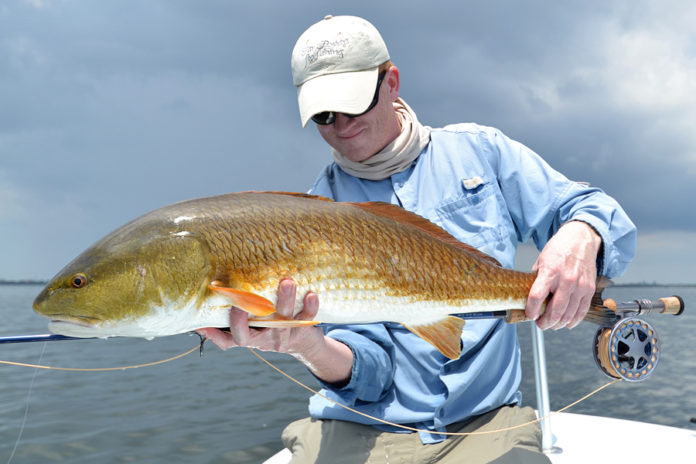Written by: Evan Jones
While it’s often true that “a poor craftsman blames his tools,” even a master fly caster might struggle with the wrong leader when chasing redfish. If it’s too short or too supple, the leader can extend prematurely and then kick downward unpredictably into the water; if too long or too stiff, it can collapse and dump the fly before unfurling completely. Minor casting flaws can compound these effects, as can throwing bigger and heavier flies, and the end result of a bad leader can be a surprising lack of accuracy. Because redfish have poor vision and live in murky habitat, the target zone is usually relatively small, a leader that fails to turn over consistently is particularly frustrating. If your leader isn’t extending completely, or if the fly is constantly crashing down to the surface and spooking everything nearby, it’s going to be a long day.
The bad news is that the two easiest solutions, buying a knotless pre-tapered leader or using one level length of line, aren’t great. The former usually isn’t stiff enough to turn over big flies at distance, and the latter is either way too thick/strong at the tippet end, or way too thin/weak at the butt end, to be effective. The good news is that building your own tapered leader is so simple, it can be boiled down to these two rules:
1. The butt section should be 5 times the fly-line weight
Example: an 8-weight fly line requires a 40-pound-test butt section. This will ensure that the tip of your fly line and leader butt are similar in diameter, leading to a smoother transfer of energy from line to leader.
2. The butt section should be at least half the total leader length.
This one may be counter-intuitive for some, but the leader butt needs to be long enough to adequately absorb energy from the fly line in order to lay the rest of the leader out straight.
Beyond these two points, the remaining details don’t matter as much, as long as each new section is thinner and shorter than the one above it. When I’m using an 8-weight rod, my standard leader is:

I lubricate all knots with Chapstick, so they cinch down tighter. The mono butt section stretches to help protect the thinner tippet, and allows for a quicker switch to a surface fly, while the fluorocarbon middle and tippet sections sink faster and provide superior abrasion resistance. Everyone seems to have their own favorite formula for building leaders, but after more than a decade of experimenting, I’ve learned that this incredibly simple configuration will still outperform most other setups. Try it and see what you think.
Evan Jones is the new assistant blog editor. He lives in Colorado.
Credit: Source link































